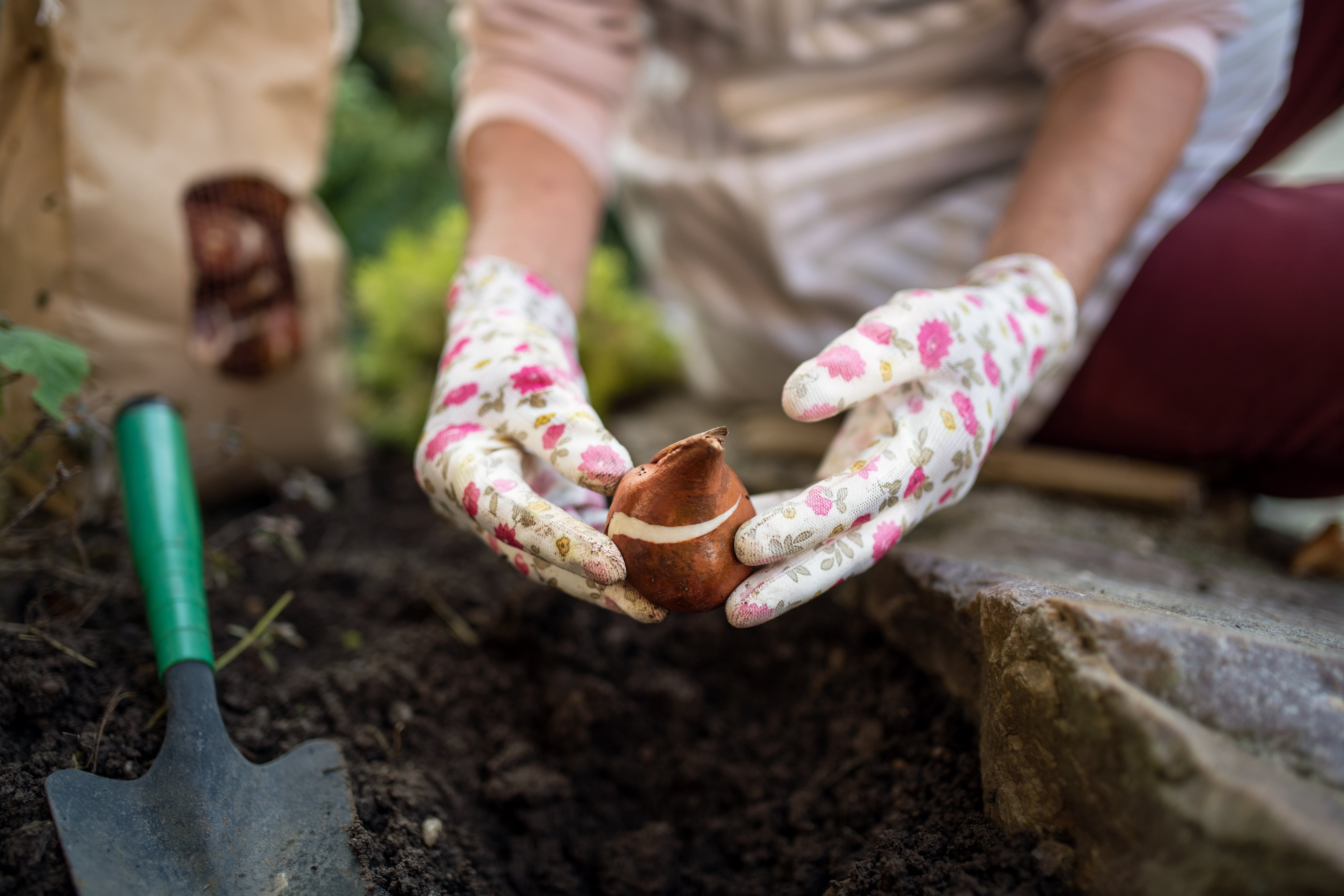What a winter it has been for gardeners, from record snowfall in parts of the country to fierce storms and gales so strong that they’ve toppled giant trees and felled mature shrubs. Damage to plants aside, another thing to contend with has been the damage to some polytunnels and glasshouses.
Over on social media, sad photos have circulated of these structures, some with their metal supports broken or twisted, others with glass panes shattered or their plastic skin ripped. Thankfully in many cases repair will be relatively straightforward. But for others the damage is so substantial that replacement is the only option.
But how to stop it happening again? As another busy growing season begins, it’s good to know there are practical ways to avoid or at least minimise the risk.
One of the easiest and most straightforward is to quickly close up these sorts of covered growing structures whenever strong winds are forecast. The aim here is to prevent wind entering the glasshouse or polytunnel and then becoming trapped within it, a common cause of damage. All doors, windows and vents should also be firmly secured to prevent them shaking loose in a gale, ideally with a few sandbags placed against doors to stop them rattling free. For polytunnels where one entrance is covered only with netting, it’s best to build a simple wooden frame covered in polytunnel-grade polythene that can be used to temporarily block it when high winds threaten. Sandbags should also be used to temporarily block any gaps between the base of the structure and the ground where wind could enter.
READ MORE
For the same reason, it’s never a good idea to store garden paraphernalia – pots, trays, buckets, tools or even lightweight seating – close to a polytunnel or glasshouse where it can be whisked up into the air by a violent gust and then thrown against the structure.
Remember too that even the best-made polytunnel plastic skin has a finite lifetime. “Fifteen years tops”
It’s a similar story when it comes to overhanging branches of trees or shrubs, which strong winds can cause to bounce and chafe against glass panes and plastic covers, eventually breaking or tearing them. As for large trees or shrubs growing nearby, these should also be checked regularly to ensure that their root systems remain stable and that any damaged or rotten branches don’t pose a potential risk.
But don’t make the mistake of thinking that it’s better and safer to do without them entirely. In fact, a well-designed, well-positioned windbreak using resilient, native woody species of trees, shrubs or hedging can play a vital role in sheltering polytunnels and glasshouses from violent winds by filtering and softening the worst of the impact. This should be positioned to the windward side of the structure, ideally at enough of a distance (not always possible) that it won’t eventually create problems with shade or with its hungry root systems robbing nutrients and water from your crops.
As for any woody or perennial climbing plants growing within these structures, check them regularly to make sure that their branches or stems haven’t slowly squeezed themselves in between the glass panes or quietly punctured the polythene covering. Much like the roof of a house, it’s always best to swiftly repair this kind of damage before it becomes significant.
In the case of small tears to the plastic covering, these can be patched with a sticky, waterproof tape designed expressly for this purpose (stockists include quickcrop.ie and fruithillfarm.com). Replacement glass panes for glasshouses can be ordered cut to exact size (check with the supplier). In the meantime, sheets of styrofoam or leftover roof insulation can be cut to size and used as a temporary stopgap.
For the same reason, avoid damage caused by inappropriate cleaning methods. Only ever use a soft brush and sponge along with some hot water and a few drops of organic washing-up liquid, along with a couple of old sheets knotted together, slung over the roof and then pulled back and forth in a see-saw fashion. Likewise, prevent a blanket of heavy slush or snow weighing down the steel hoops of your polytunnel by using a sweeping brush with the head wrapped in a towel to gently push up the plastic covering from inside the structure. This can also be used to brush heavy snow away from glasshouse roofs. Just don’t let it pile up high along the sides where it can cause damage.
As for the structure itself, bear in mind that not all glasshouses and polytunnels are created equal in terms of the quality of their design as well as the materials used, a painful lesson that some will have learned recently. Respected Irish suppliers such as Colm Warren Polytunnels (CWP) use high-tensile steel for all the supports along with a heavy-gauge polythene sheeting (between 800 and 1000 gauge) for the plastic skin. In windy or exposed areas, Deirdre Warren of CWP recommends using extra-strong steel supports with a larger diameter and/or spacing hoops more tightly together. Cross-braces that further reinforce the structure are automatically included in all their designs (thepolytunnelcompany.ie).
[ Your gardening questions answered: Is a polytunnel too much work?Opens in new window ]
Both location and quality of installation also matter a lot. It’s important, for example, to choose a relatively sheltered, free-draining, level site where possible to minimise the chances of storm damage. In the case of both glasshouses and polytunnels, the main framework should also be cemented firmly in place to prevent it gradually shifting or loosening in high winds. In the case of polytunnels, ground rails are preferable to trenching in terms of keeping their plastic skins properly taut.
Speaking of tautness – the defining mark of a well-installed polytunnel – this is vital in terms of avoiding its plastic skin flapping in high winds, causing damage and shortening its lifetime. If you’ve installed it yourself, then bear in mind that anti-hot spot tape is also considered a must in terms of preventing the metal supports from weakening the plastic covering as they heat up in high summer temperatures.
Remember too that even the best-made polytunnel plastic skin has a finite lifetime. “Fifteen years tops,” says Deirdre Warren of CWP. Beyond that, the chances of it being damaged in a storm rapidly increases. Far better instead to bite the bullet and replace it with a new, high-quality polythene film. Finally, it’s worth considering including your glasshouse or polytunnel in your house insurance. It is, after all, a very valuable piece of kit as well as often a much-loved one.
Dates for your diary
Snowdrop Month at Altamont Gardens, Ballon, Co Carlow, February 1st–28th (9.30am-4pm, with daily guided tours (Monday-Friday, 2pm) or group tours by prior arrangement. Other Irish gardens with outstanding collections of snowdrops opening to the public in February include Burtown House (burtownhouse.ie); Huntington Castle (huntingtoncastle.com); Shankill Castle (shankillcastle.com); Hunting Brook (huntingbrook.com); Bellefield (rhsi.ie); Blarney Castle (blarneycastle.ie); Kilmacurragh (kilmacurragh.ie); Ballyrobert (ballyrobert.com), Coosheen (hesterfordegarden.com); Primrose Hill (@primrosehillgarden_ireland) and Woodville Walled Garden (woodvillewalledgarden.com). Opening times vary.
Saturday, 22nd February, Crowne Plaza Dublin Airport Hotel Conference Centre, Northwood Park, Santry, Dublin D09 X9X2, Building Resilient Landscapes for a Changing Climate, the GLDA 2025 seminar with guest speakers Henrik Sjöman, Wendy Allen, Charlotte Hitchmough, Adam Whitbourn and An Marie Powell, see glda.ie for booking details.
This week in the garden
Stock up on plant labels, seed trays, horticultural fleece and bags of a very good quality peat-free seed compost such as Klasmann in preparation for the beginning of the busy spring season. Indoor plants often start to need more watering at this time of year, both as a result of a subtle increase in light levels as spring approaches as well as warm indoor temperatures due to indoor heating. So regularly check the moisture level of the compost by pressing your index finger into it, as well as lifting the pot to gauge its weight. If it feels light and dry then gradually increase the amount of water. But always avoid watering so much that the compost becomes sodden and cold, risking both plant disease and plant death.
















